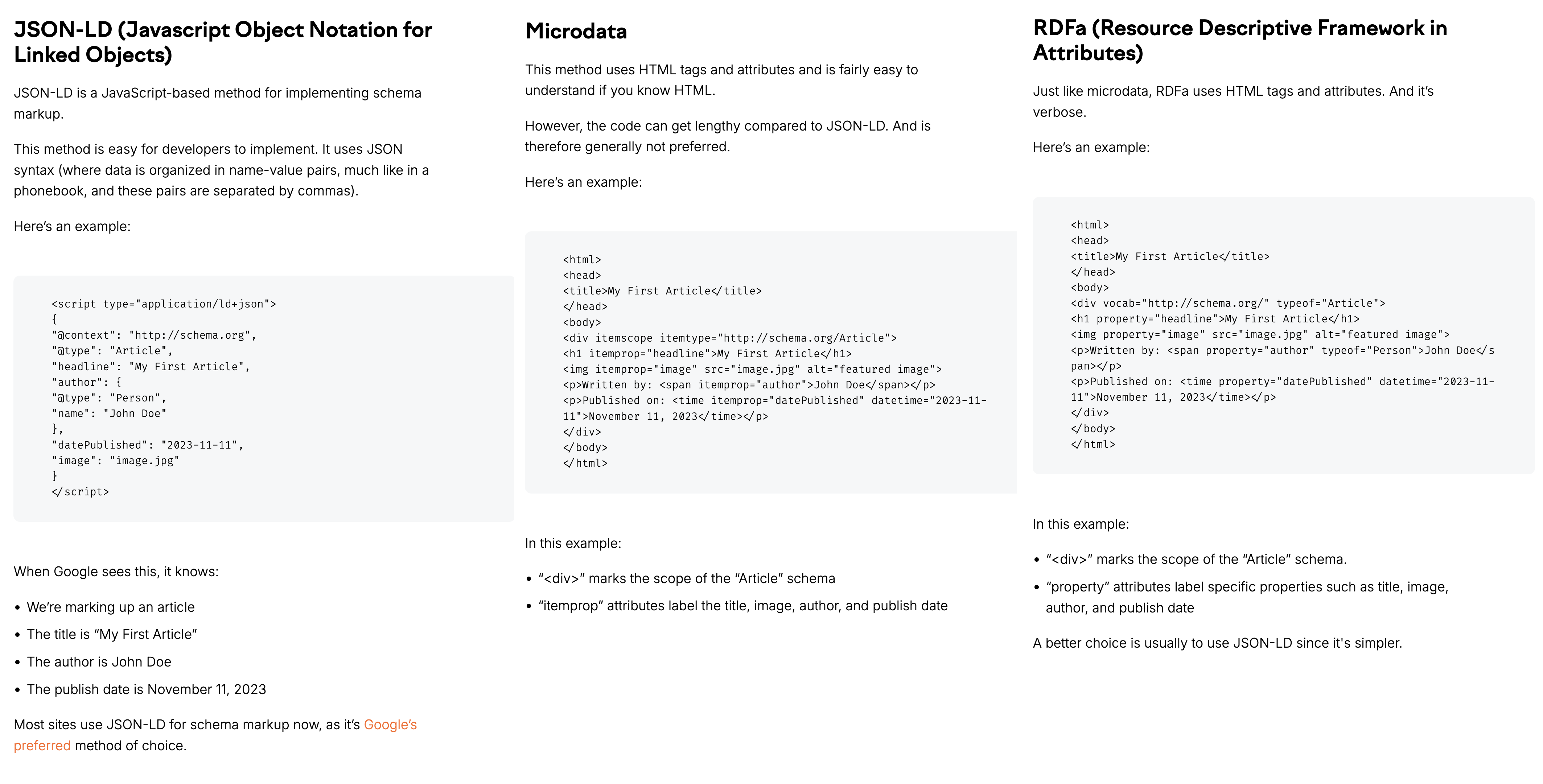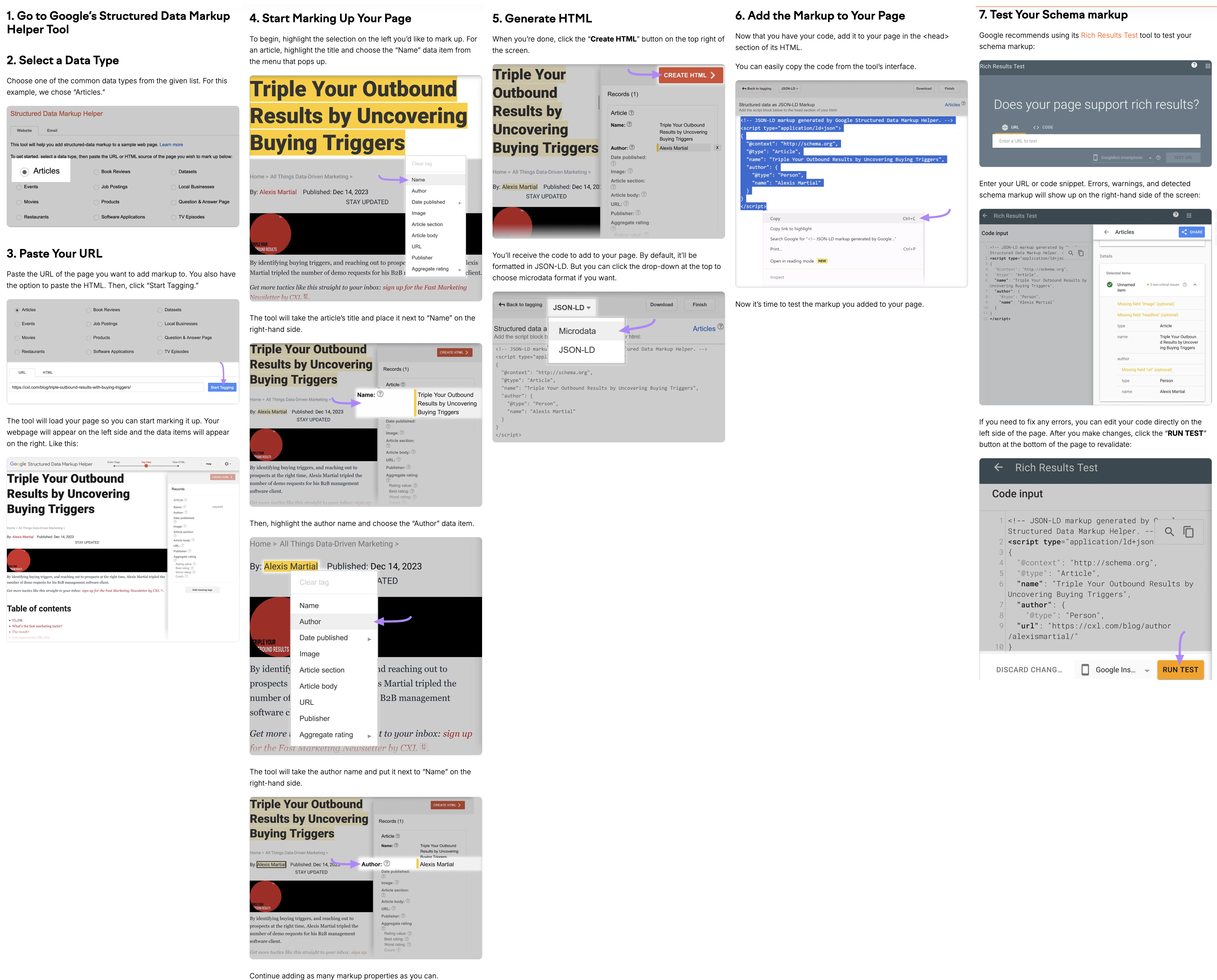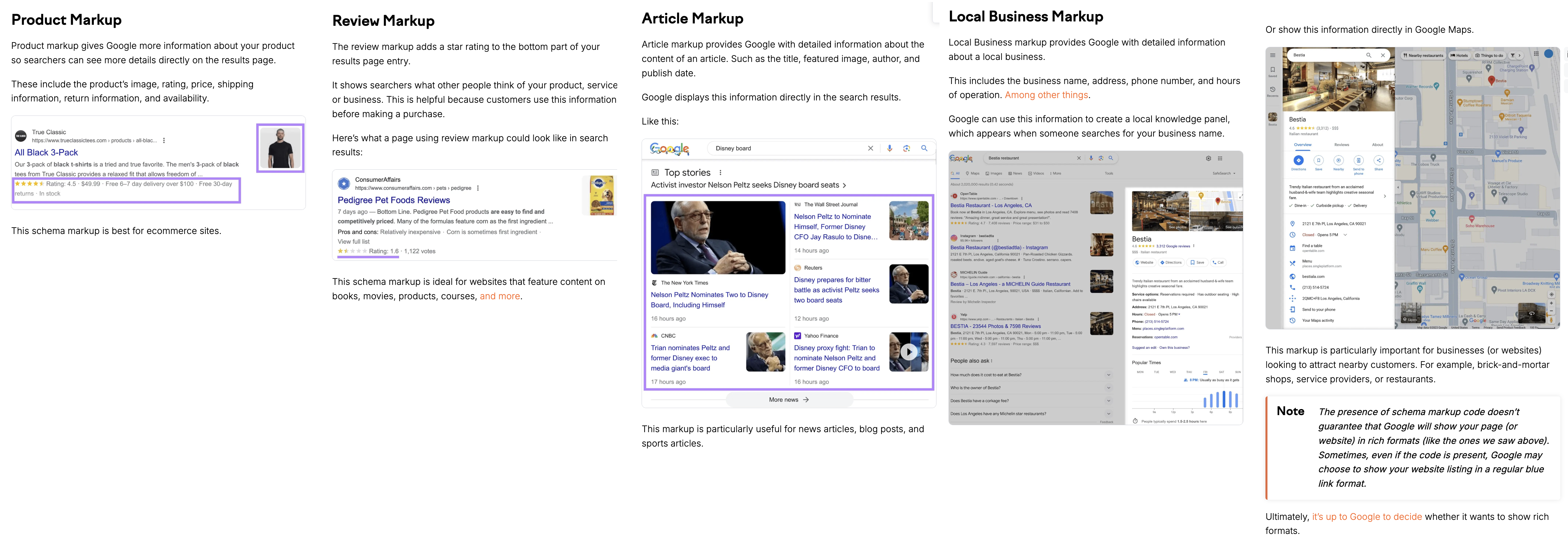TLDR;
Schema markup (schema.org) is a agreed structured data format that exposes the context and content of website to the search engine; One of the most common practice to add schema markup to websites is through json-ld data wrapped in <script> tag ; With the addition of these structured markup data, the search engine will then be able to understand the website, and provide additional feature such as rich-style interactive component like card, carousel, accrodion, etc, making your website stand-out amongst the other search result in organic search.
What is Schema Markup (Schema.org) ?
Schema.org was founded by Google, Microsoft, Yahoo, and Yandex with the mission to create, maintain, and promote sche structured data on the internet. In other words, it’s a common markup language that all search engines can understand and context. By leveraging the Schema.org vocabulary, you can help increase the search engine’s understanding of your website. Here are the main types used for Rich Features within Google SERPs: Articles, Breadcrumbs, FAQS, How-to, Local Business, Organization (Logo), Product (Service), Q&A, Reviews, Video, etc.
(how does it work?) Schema.org is set up in a hierarchical order. The broadest item type is “Thing.” Each Item type has “properties” that further describe it. Some properties are required, while others just add more details and context. As you choose a property, be as precise as possible. Choose the correct item and then define all the properties associated with the “Thing” you defined.Schema.org has a page for each Item Type (for instance Schema.org - FAQPage) where you’ll find examples at the bottom of each page that can help you understand how to create the markup.
– [SMA Marketing]
Below are an few example of the different types of “schema.org” structured data (LEFT: its schema definition, RIGHT, data that follows the schema):
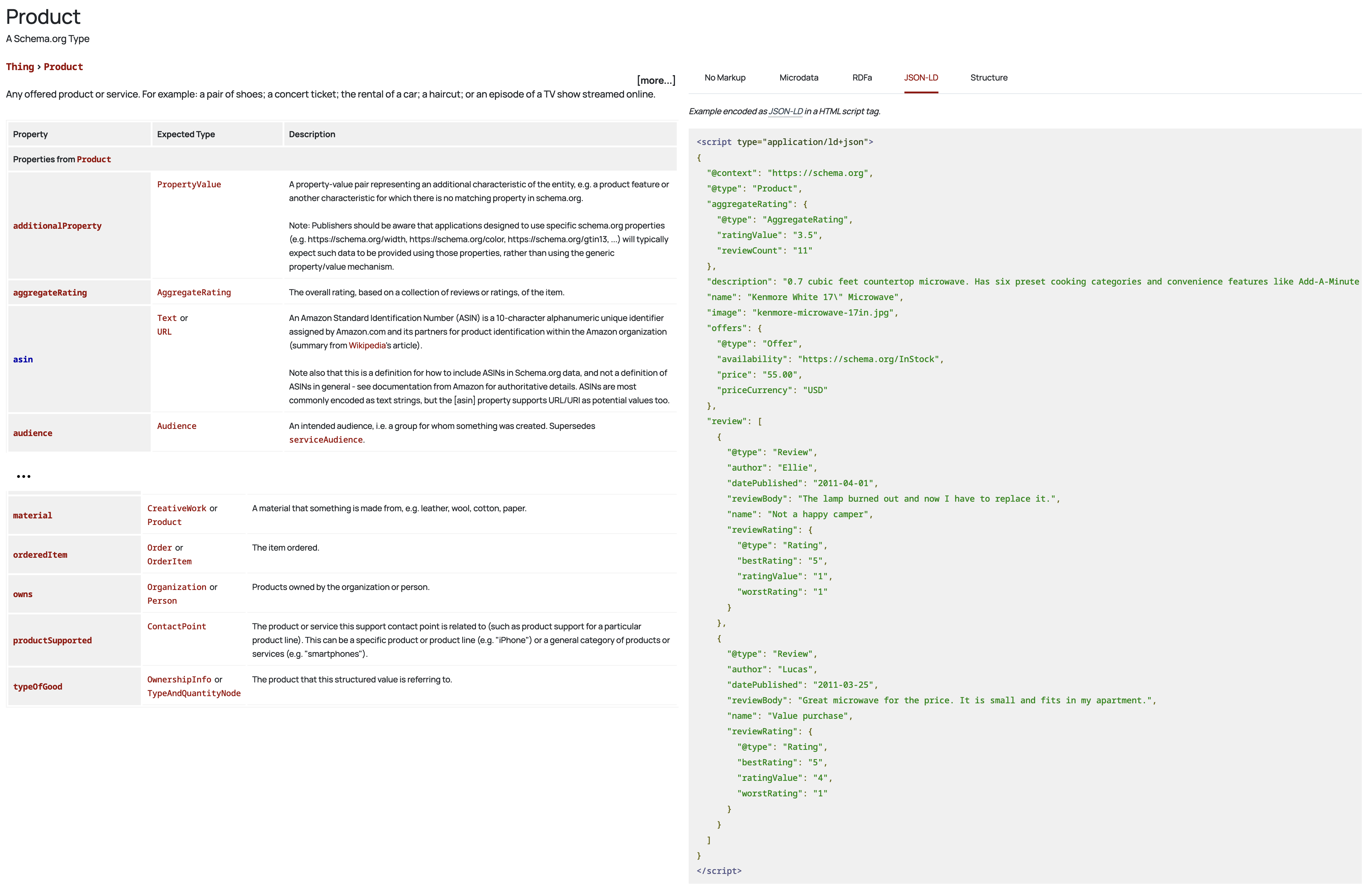
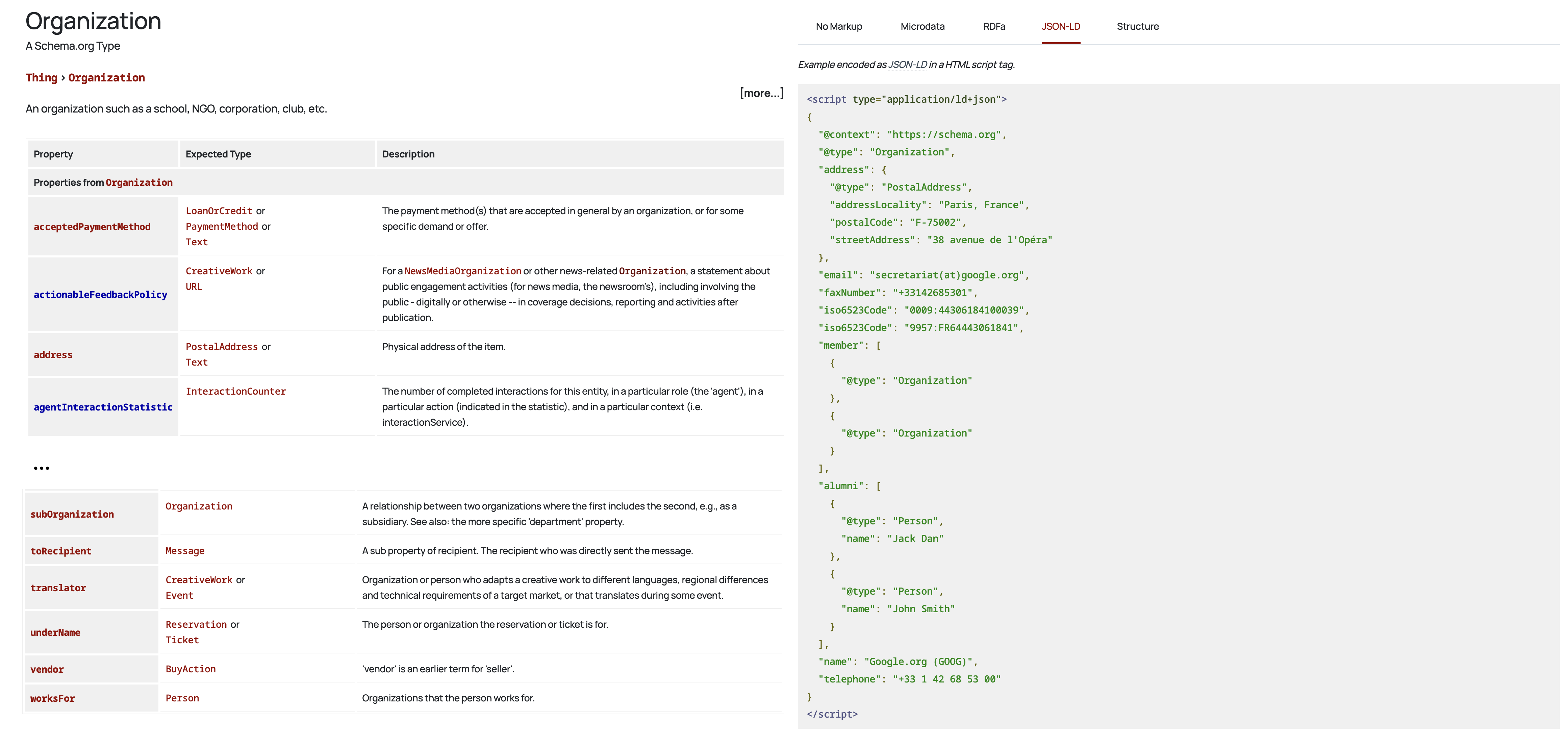
You can find a full list of such schema types on this page: https://schema.org/docs/full.html
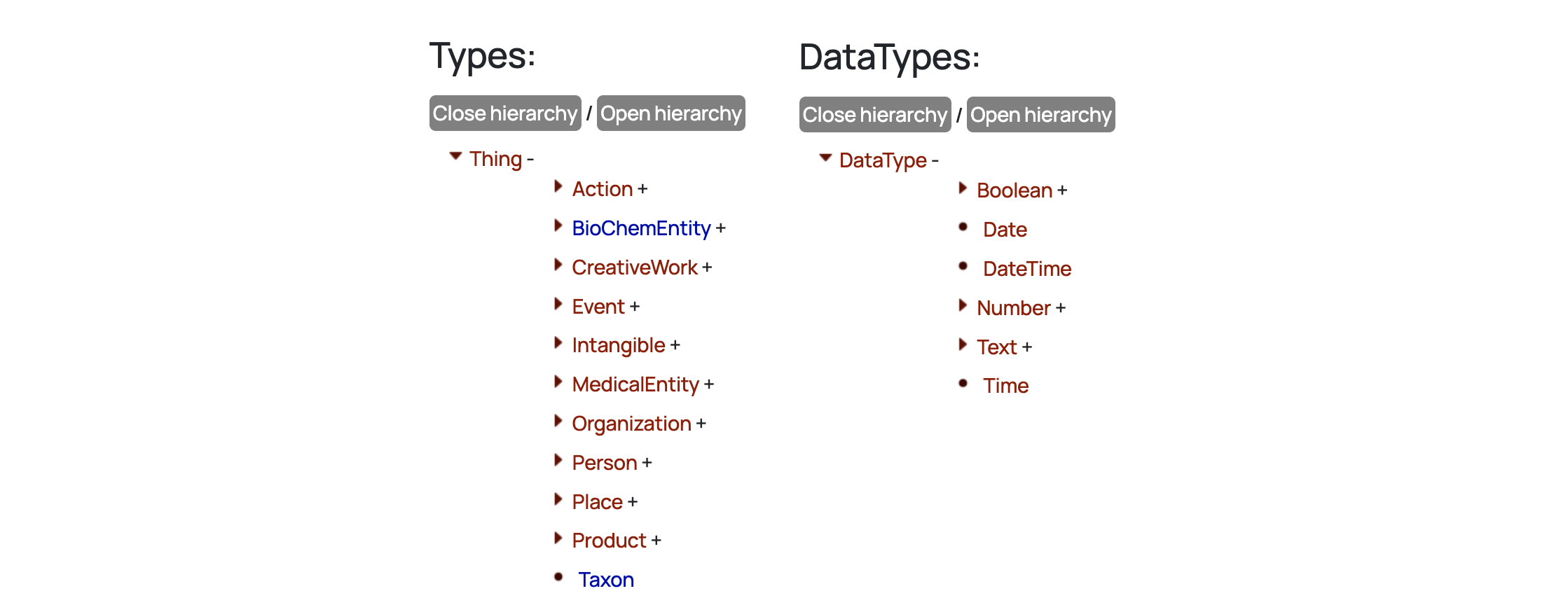
Where to use/add Schema Markup (Schema.org) ?
There are three ways to communicate schema markup to search engine like Google. Essentially, these are coding methods your schema markup code is formatted in. So it is machine-readable. These include:
- JSON-LD: is a JavaScript-based method for implementing schema markup.
- Microdata: This method uses HTML tags and attributes and is fairly easy to understand if you know HTML.
- RDFa: Just like microdata, RDFa uses HTML tags and attributes. And it’s verbose.
Here’s a brief overview of them:
If you use SEO Optimization tool like Semrush, you can generate the schema markups for your pages with it, and attach itthem to the pages to be compliant with the standards:
– [Semrush Blog]
Schema.org markup can be added to any website page. Adding the the markup using JSON-LD, doesn’t impact the design or speed because it’s only data. You can add it to a page directly, using a plugin or with Google Tag Manager. Determining what markup type to add, depends on the page and its content. Here are some common pages and associated markup type.
Page Type Markup Type (Structured Data Type) Schema.org Page Home / Front Page Organisation https://schema.org/Organization About Us Page About https://schema.org/about Product / Service Page Product https://schema.org/Product Contact Page Article / BlogPosting https://schema.org/Article / https://schema.org/BlogPosting FAQ Page FAQPage https://schema.org/FAQPage – [SMA Marketing]
Why is Schema Markup (schema.org) important for SEO ?
Google uses structured data to understand the content of your site better and enable Rich Features to your site links within the search results.Research has shown that these features have a significant impact on the click-through-rate of your site. Here are some common Rich Features.
– [SMA Marketing]
Schema markup is important for SEO not because it directly impacts your rankings in search results. But because of its other benefits.
First, schema markup **helps search engines understand the context ** and content of your pages more effectively. This improved understanding can lead to your pages being shown for more relevant search queries. Which translates to more traffic.
Second, schema markup can enhance the appearance of your page in search results. This means people are more likely to notice and click on your page. Improving your click-through rate (CTR).
And third, schema can give you a competitive edge. Many sites still aren’t using schema markup. So when you do, you’re getting ahead of the curve. It’s a competitive edge that makes your website stand out.
All these things can contribute to overall better SEO performance for your site.
– [Semrush Blog]
When your website (’s page) provides structured data that full-fills the minimum schema requirement (may vary depending on different search engine), the search engine is able to display rich-style looking result for you; For example, you may have article being shown as multiple cards, breadcrumbs below your result, or even expand/collapsable FAQ section:
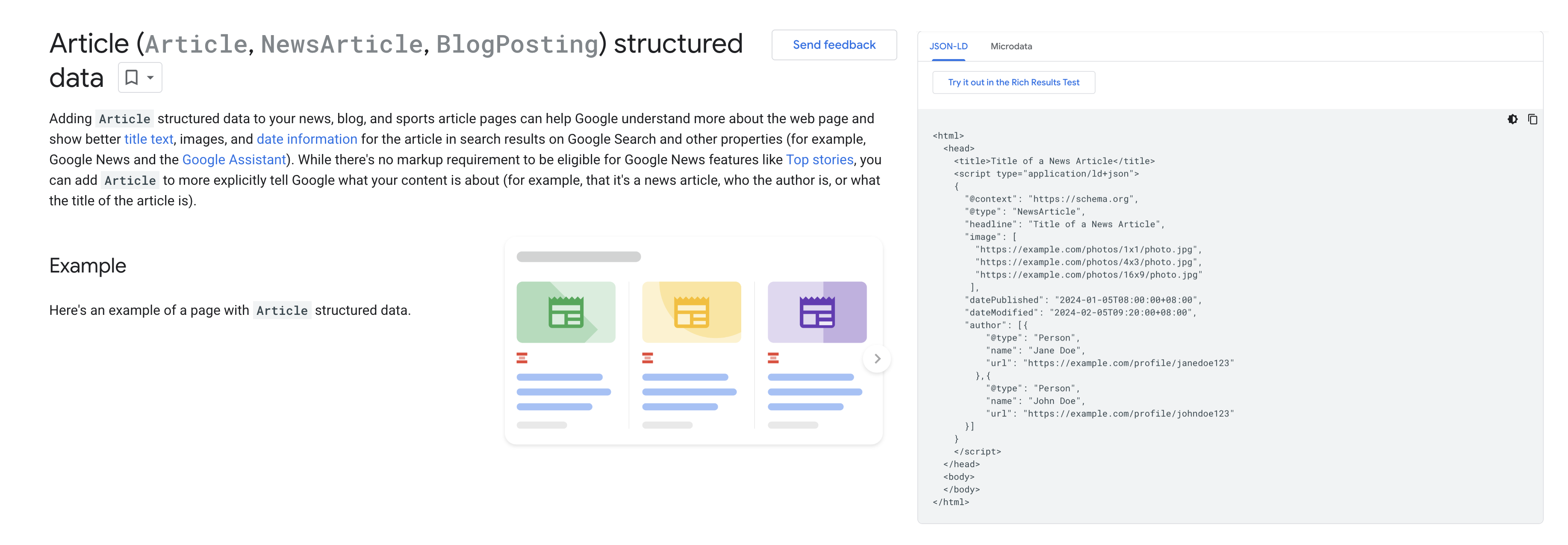


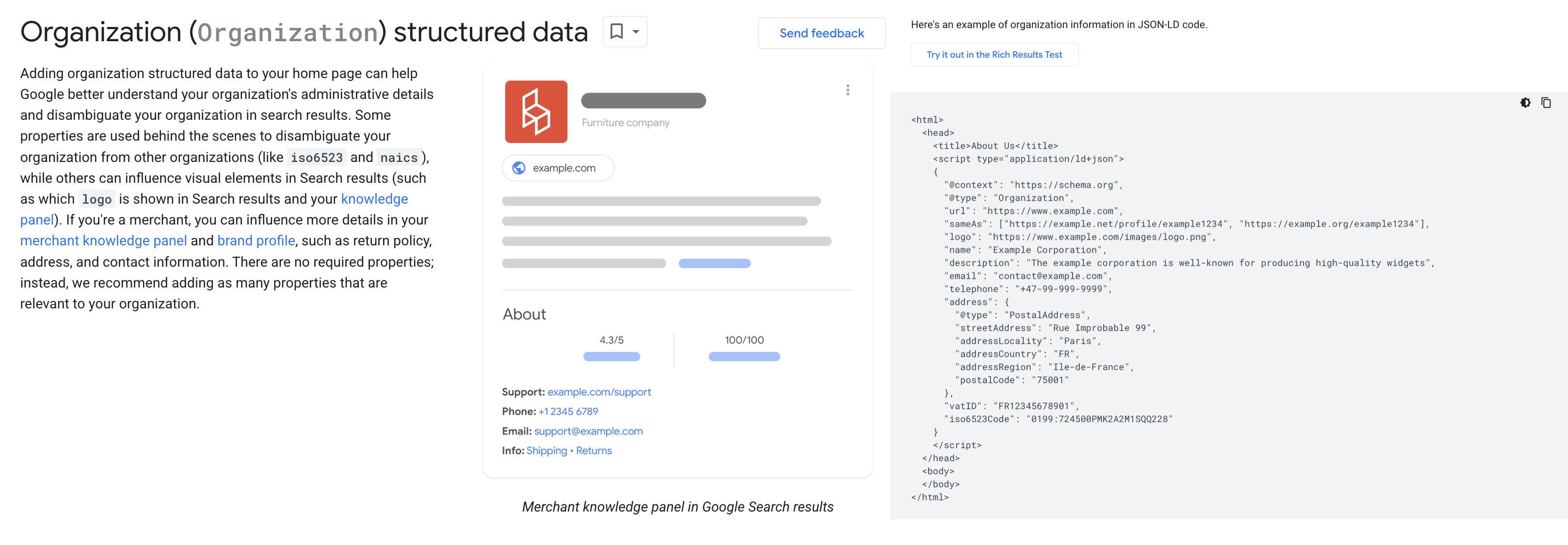
You can find a full list of such rich-style featues Google provides for varies structured data: https://developers.google.com/search/docs/appearance/structured-data/search-gallery
Schema Markup vs Meta Tag ?
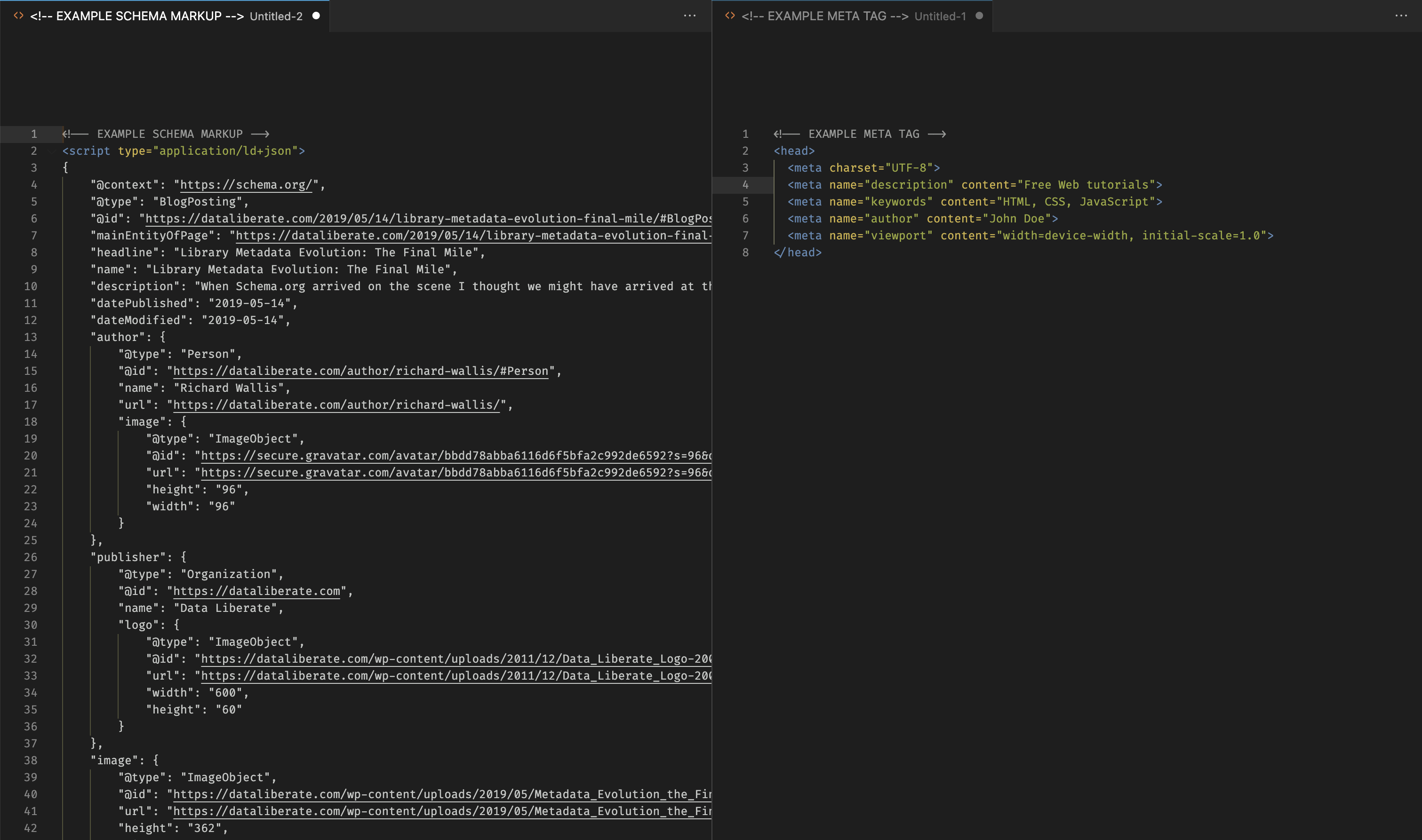
While both meta tags and schema markup are used to provide information to search engines about a webpage, the key difference is that meta tags offer basic descriptive information like page titles and descriptions, while schema markup uses a structured format to convey detailed entity data about the content on a page, allowing search engines to understand the context and display richer snippets in search results.
Meta tags:
- Basic information: Includes elements like title, description, keywords (although less relevant today) which provide a brief summary of the page content.
- Simple implementation: Easily added to the HTML head section of a webpage using standard meta tags.
- Limited functionality: Primarily used for basic search engine display and ranking signals.
Schema Markup:
- Strctured data: Uses a defined vocabulary to specify the types of entities on a page, like “product,” “event,” or “person,” along with their attributes (price, date, location).
- Rich snippets: Enables search engines to display enhanced information in search results, such as star ratings for products or event details
- Advanced implementation: Requires adding specific code to the HTML using a structured format like JSON-LD or microdata.
In summary, think of meta tags as a basic introduction to a webpage, while schema markup provides a detailed, structured profile of the content, leading to potentially richer and more informative search results.
